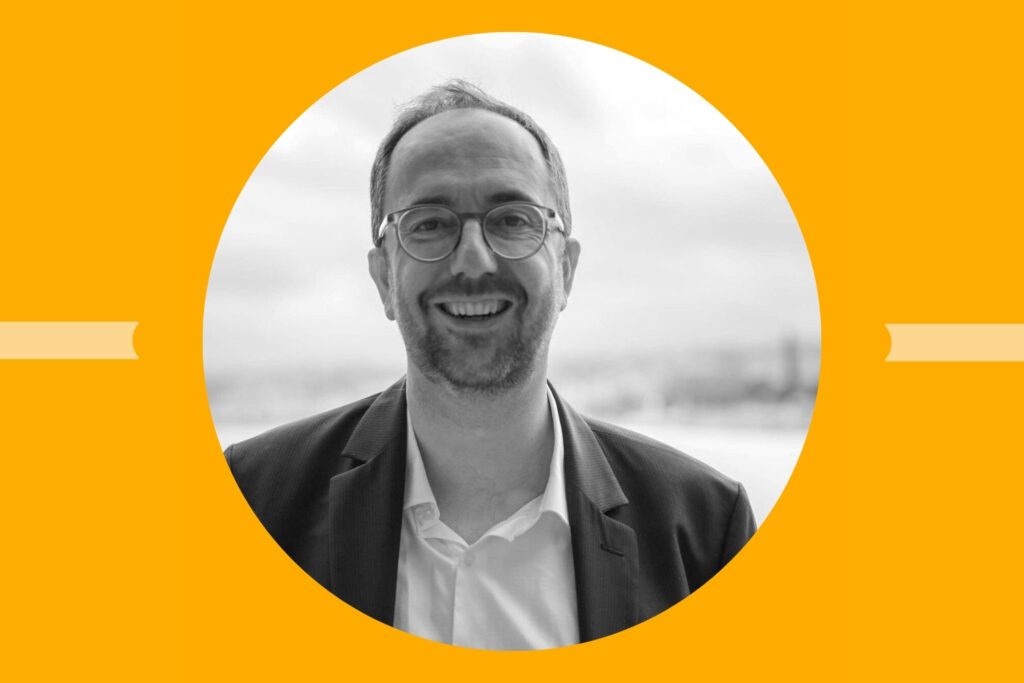
I work as a project manager in the Veolia Group’s Strategy-Innovation & Development department, more specifically in the New Materials Loops team. My role focuses on the development and industrialization of new market opportunities in the field of recycling, with a particular emphasis on textile waste.
In support of VEOLIA’s GreenUp strategic program, our team aims to limit the impact of human activities on the use of natural resources in two ways: finding solutions for new waste streams (EV batteries, solar panels, wind turbine blades) and optimizing the management of existing flows like household waste, through new models or new technologies, to maximise circularity and increase waste valorisation.
In the textile sector, we manage end-of-life flows from various sources, including consumer waste, post-industrial textile waste, and textile waste from public services. My responsibility is to lead our efforts in finding innovative and high-value recycling solutions and business models for these diverse textile waste streams, especially in light of tightening regulations and continuously increasing waste volumes.
Veolia’s participation in the T-REX Project is a strategic initiative that aligns with our company’s goals in advancing circular economy solutions. Our primary focus within the project is on optimizing feedstock preparation technologies for chemical recycling of textiles.
Specifically, we are working on three streams. First of all – the calibration and comparison of different advanced processes for sorting (color and material) and preparation of the garments for mechanical or chemical recycling (clipping, fraying and hard point removal). Secondly, we work on improving preparation methods to enhance the quality of feedstock for chemical recycling. Finally, we explore new innovative approaches to handle the complex mix of materials found in textile waste.
Our involvement in the T-REX Project is an opportunity to not only improve our current processes but also to pioneer new approaches that will define the next generation of sustainable textile management.
The major challenge lies in transitioning from a linear to a circular ecosystem in the textile industry. This involves overcoming the technical complexity of sorting and preparing mixed and complex materials.
Economic viability is also crucial: we must ensure that the fibre-to-fibre recycling process can compete with virgin materials in terms of quality and cost.
The greatest opportunity in textile-to-textile recycling lies in creating a closed-loop system. Our focus on optimizing feedstock preparation is key to unlocking this opportunity. By improving the quality and efficiency of this initial stage, we can, after valorization of textile reuse and mechanical recycling, improve the way for more effective chemical recycling processes capable of producing high-quality fibers comparable to virgin materials. This advancement could transform textile waste into a valuable resource, creating new economic models and positioning Veolia as a key player in the global circular textile economy. For that, one of the game-changers will be the implementation of helpful regulation at EU level that will set requirements regarding the incorporation of recycled fibres in new garments.
Beyond that, this project fosters essential collaboration across the textile value chain, uniting stakeholders to enable closed-loop recycling within the EU. The project is also a driver for supportive and ambitious pending recycling regulations.
By 2050, we see a fully circular textile industry. Textiles will be designed for longevity and recyclability, with digital tracking ensuring efficient life cycle assessment. Chemical recycling technologies will complement reuse and mechanical recycling, handling complex materials. This integrated approach will significantly reduce virgin material use and minimize waste. Crucially, it will contribute to the decarbonization of our waste streams and substantially reduce the textile industry’s water and energy consumption, creating a sustainable, closed-loop ecosystem aligned with global environmental goals.